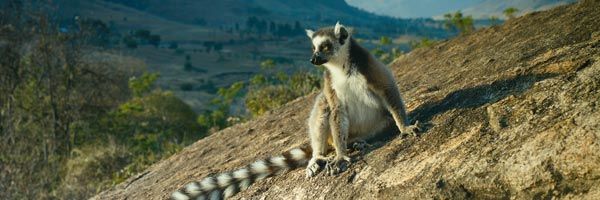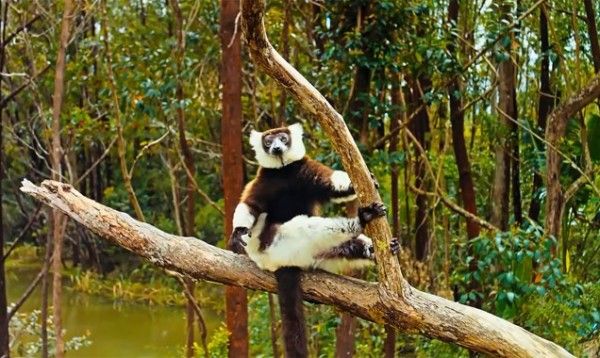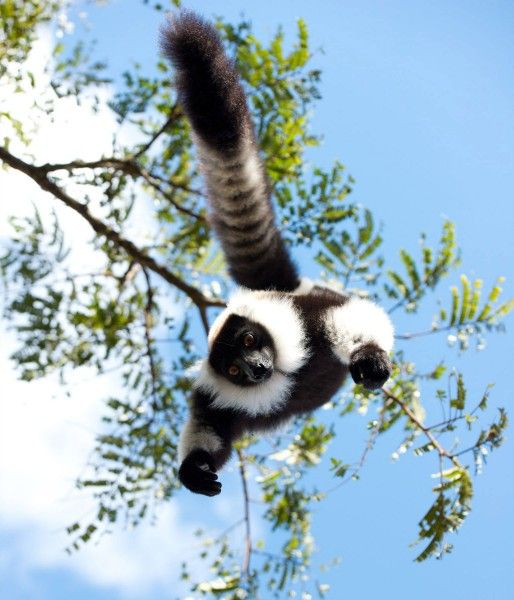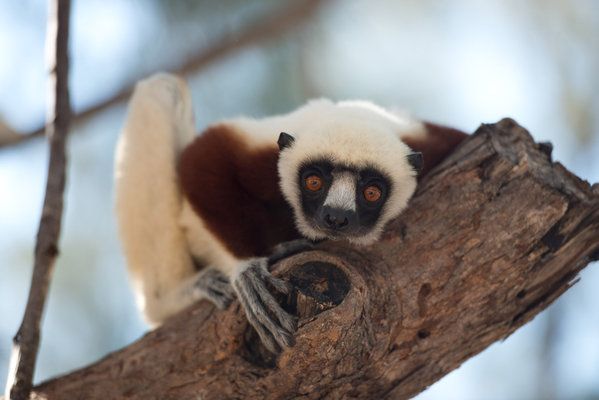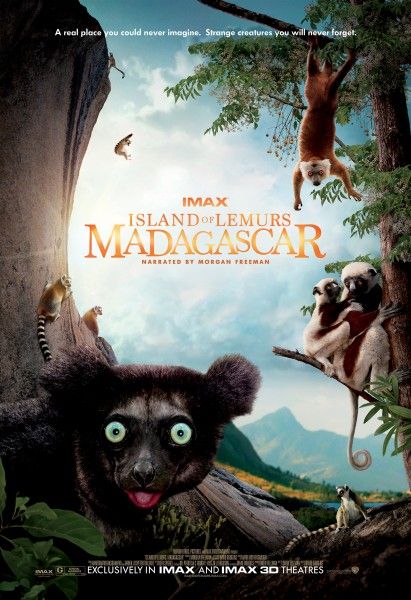From filmmakers David Douglas and Drew Fellman, the IMAX 3D documentary Island of Lemurs: Madagascar tells the incredible true story of the strange and unusual creature known as the lemur. Millions of years ago, lemurs arrived in Madagascar, where they have since evolved into hundreds of diverse species, some as large as a gorilla and some as small as a mouse, but are now highly endangered.
At the film’s press day, director/cinematographer David Douglas spoke to Collider for this exclusive interview about how this documentary came about, the extent that they had to plan ahead of time, making the notion of extinction part of the conversation, making sure the film falls between science and entertainment, the advantage of being his own cinematographer, incorporating the music, getting Morgan Freeman to narrate, how much time they spent shooting, shooting lemurs on a green screen, and the shots that he’s most proud of. Check out our David Douglas Island of Lemurs interview after the jump.
Collider: Something like this must take an extreme amount of planning. How did this come about for you?
DAVID DOUGLAS: Drew [Fellman] and I kicked around different ideas for what we might do next, after Born to Be Wild. Drew went to a dinner in L.A., that was a fundraising dinner for Dr. Patricia Wright, and then he came into the editing room the next morning and said, “You know, I met this woman last night. We might think about doing something about her work. She’s working with lemurs in Madagascar.” I was like, “Okay, fine,” but I didn’t pay attention because we were doing the other film. But it percolated, as things do, and we began to really think about whether such a thing could be possible. It’s so off the charts and off anybody’s radar screen, that place. It might as well be another planet. Just try to find somebody who’s been to Madagascar. Nobody has been to Madagascar. So, we just decided to go there. They gave us enough money to buy a ticket over there and visit Pat. And then, Pat became our guide and we plotted with her about what a film about lemurs and science could be. We began to think about what kind of resonance was there, culturally, for us. We tried to balance the entertainment and the strangeness of the lemurs with the familiarity of the primate model, and then have the whole thing go on in some kind of strange world music miasma. We thought it would work, but I don’t think we were sure. And nobody was stopping us.
When you do something like this, that’s focused on one animal, do you have to make sure that that animal will have enough of a personality to be interesting for the length of a film?
DOUGLAS: Well, it’s not really one animal. That’s what let us get away with it. There are so many kinds of lemurs. When it’s one animal, you really do have a tougher time because you’ve gotta commit to story structures that maybe are difficult to find the range in the animal to tell those stories. There are only so many things they do, if they’re living in the natural world, that we can appreciate. There are plenty of things that they do that we don’t appreciate. The thing that’s interesting about the film is that it lets us bring this notion of extinction up and put it on the table. It’s part of the conversation now. And a big part of that for us was just to try to reveal the value of these lives that we’re talking about, that are going to be gone, and let people see that the creatures live interesting lives. They have capabilities, they think, they have self-awareness, they can plan. All of these things that the Church tries to tell us that only humans can do is bullshit. These animals do have emotions, and all of these things. The point of doing a film that is somewhere between science and entertainment is so kids will get attached to these things and maybe one out of a million will do something about it.
What are the challenges of shooting this with the IMAX cameras? Do you feel like it really works to your advantage to be your own cinematographer?
DOUGLAS: Yeah. I grew up as a cameraman, so it’s much easier for me to shoot it myself. I work with an operator and a crew, but it’s way easier for me to function as a cinematographer, than to have a cinematographer between me and the lens. I don’t need that. I’m the most experienced cinematographer in this medium, so there’s no point in having that extra conversation in the middle of the loop. You’re making the film in relation to what’s happening now, and you can’t really affect what’s happening now. It’s not like you’re in control of anything in front of the camera. If you’re calling yourself the director and you’re not the cinematographer, I think you’re kidding yourself.
You don’t have any control over what the animals are doing, but what was it like to put this film together, get the music that adds to it in the right way, and have someone like Morgan Freeman do the narration?
DOUGLAS: It’s fantastic to know that you’re going to be able to call on such extraordinarily talented people to do things that we know they can do so well. The music almost always comes from Drew’s research. He’s got an awesome music collection, and he never stops listening to the weirdest music. And what you really want in a narrator is somebody who you believe and who you like to listen to. Those are the two main things. Morgan [Freeman] does both of those so well. The way that words come out of his throat, he says them how you’ll believe them, as great actors do. His job, as an actor, is to make you believe.
How long did you spend shooting this?
DOUGLAS: We spent four or five months shooting, but it was months of scouting before that, to figure out where to go. Because Pat had this in-depth organization of science people out there, we were able to really on them to spot for us, and that made it possible. We weren’t always sure how it was going to go?
And you shot lemurs on a green screen?
DOUGLAS: Yeah, we really flipped our lids there. We were trying to figure out how to do this backstory of lemurs coming to Madagascar, 60 million years ago. It’s my understanding that that’s the only group of captive fat-tailed dwarf lemurs, in the world. And the one that’s standing in front of the green screen in the special effects shot, as the captain of the ship, is one of those lemurs. So, we had to do what we could with the title sequence to try to situate people and give people a couple of subtle ideas that lemurs are not what you think they are. We wanted to put people in a position of being able to accept something new because that’s what they’re going to get.
Do you have a shot in the film that you’re most proud of?
DOUGLAS: That’s just about every shot because we had so little control of anything. We didn’t really even know if they were going to show up. What we went through to actually get the film done was months of to and fro, with all sorts of political opposition. We were really concerned that we wouldn’t get that core story for Pat in there. I loved riding around in the balloon. It’s a great platform to work from. I loved that shot over the trees with the caravan. That just had a nice IMAX feel to it.
Island of Lemurs: Madagascar is now playing in theaters.

